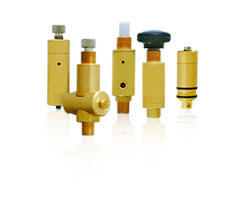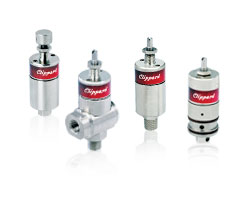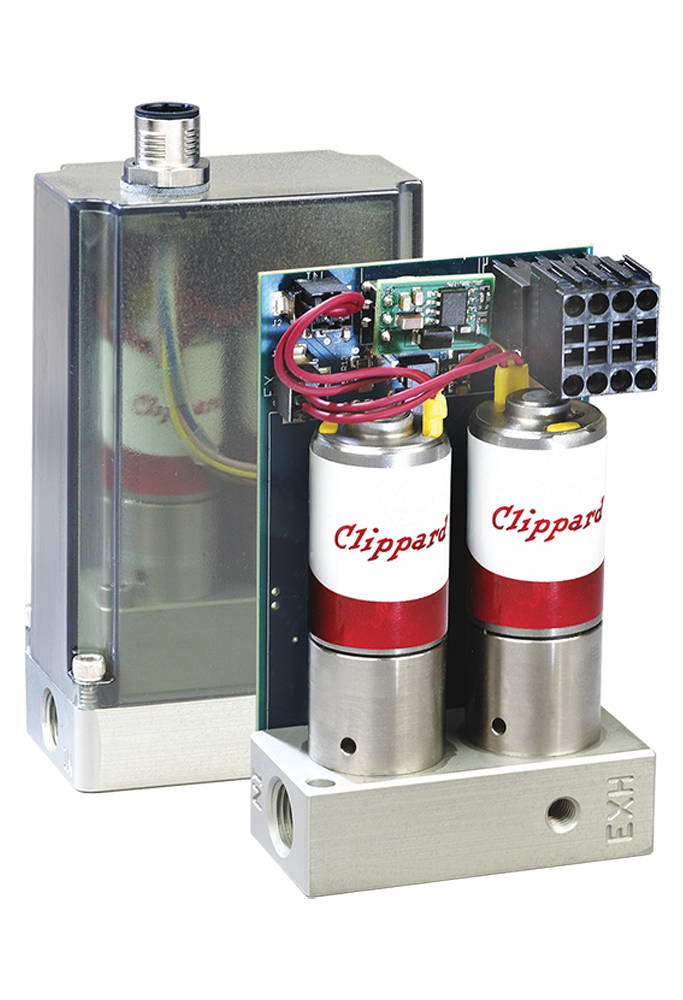Mechanical vs. Electronic Pressure Regulators: A Detailed Comparison
Pressure regulators are essential components in many systems, tasked with maintaining consistent pressure despite fluctuations in input or downstream demand. The choice between mechanical and electronic pressure regulators can have a significant impact on performance, and understanding the strengths and weaknesses of each type is crucial for selecting the right one for a given application. The decision often boils down to controllability, accuracy, dynamic performance, and cost.
Mechanical Regulators
Mechanical regulators have been around for a long time and are widely used due to their simplicity and reliability. These devices rely on physical components like springs, diaphragms, and orifices to maintain a steady pressure. Once set, they are largely "set it and forget it" devices, ideal for stable systems with minimal fluctuations.
Electronic Pressure Regulators
Electronic regulators, on the other hand, use sensors, processors, and electronically controlled valves to regulate pressure more dynamically. They are more complex but offer superior precision and adaptability, making them ideal for applications that require real-time adjustments and integration with other systems. These devices rely on physical components like springs, diaphragms, and orifices to maintain a steady pressure. Once set, they are largely "set it and forget it" devices, ideal for stable systems with minimal fluctuations.
Video filmed at Clippard in Cincinnati, Ohio
Subscribe to Clippard's YouTube Channel
Controllability: A Clear Advantage for Electronics
In terms of controllability, electronic regulators far outpace mechanical regulators. Electronic systems are designed to adjust pressure in real-time, based on feedback from integrated sensors. This feedback loop allows for constant monitoring and precise adjustments to the system’s pressure, even when conditions change.
| Electronic Pressure Regulators | Mechanical Pressure Regulators |
|---|---|
| Their ability to interface with other systems and adjust on-the-fly makes them highly versatile. Systems can be automated, and pressure can be fine-tuned based on varying inputs or external factors. | A mechanical regulator, by contrast, is controlled by a fixed adjustment screw. Once set, it stays at that level until manually adjusted again. There is no real-time adaptability or integration with other systems, making it less suited for dynamic environments. |
Accuracy: Fixed vs. Dynamic Precision
When it comes to accuracy, electronic regulators offer greater potential for precision.
| Electronic Pressure Regulators | Mechanical Pressure Regulators |
|---|---|
| These systems take advantage of internal sensors and processors that monitor pressure continuously. This allows for dynamic adjustments to ensure pressure remains within the desired range, even in systems with fluctuating demands or inlet pressures. This real-time feedback enhances accuracy, particularly in systems that require precision under varying conditions. | The accuracy of a mechanical regulator is determined by its design—specifically, the diaphragm size, orifice size, and spring tension. While the performance is predictable and consistent, once set, there’s no way to adjust or compensate for fluctuations in real-time. Accuracy is generally fixed based on the model’s design. |
Dynamic Performance: Flexibility for Changing Conditions
Dynamic performance refers to how well a regulator handles fluctuations in pressure. This is another clear advantage for the electronic regulators.
| Electronic Pressure Regulators | Mechanical Pressure Regulators |
|---|---|
| Electronic pressure regulators can adjust quickly to changes in both inlet pressure and downstream demands. This is crucial for systems where conditions are constantly changing, such as in high-performance manufacturing or medical applications. Their ability to make quick adjustments ensures stable operation even in fluctuating environments. | In contrast, mechanical regulators are designed for more static environments. Once set, they are less adaptable to changes in system conditions. For stable, low-demand systems, mechanical regulators work well. However, if the pressure fluctuates or if dynamic changes are frequent, a mechanical regulator may struggle to keep up. |
Cost: Weighing Performance Against Price
Cost is often a deciding factor when choosing between mechanical and electronic regulators. While electronic regulators offer enhanced performance and flexibility, they also come at a higher price.
| Electronic Pressure Regulators | Mechanical Pressure Regulators |
|---|---|
| The additional complexity of sensors, processors, and feedback loops means that electronic regulators are generally more expensive. However, the added cost is often justified in high-demand applications where precision and adaptability are crucial. For example, industries such as aerospace or robotics benefit from the advanced capabilities that electronic regulators provide. | Mechanical regulators are simpler and therefore more affordable. They are ideal for applications that don’t require constant adjustments or advanced features. For systems that operate in stable conditions and have straightforward pressure control needs, a mechanical regulator offers a reliable, cost-effective solution. |
Choosing the Right Regulator for Your Application
The choice between mechanical and electronic regulators depends largely on the specific needs of your system. Here's a quick breakdown to guide your decision:
| Electronic Pressure Regulators | Mechanical Pressure Regulators |
|---|---|
|
Choose an electronic regulator if... • You need real-time adjustments or dynamic control • Your system requires high accuracy and adaptability • Integration with other systems or automation is needed • The cost is justifiable due to the need for enhanced performance and flexibility |
Choose a mechanical regulator if... • Your system operates in a stable, low-demand environment • You need a simple, reliable solution without the need for constant adjustments • The cost needs to be minimized while still maintaining good performance |
Both mechanical and electronic regulators have their place in engineering applications, and the right choice depends on balancing factors like performance requirements, cost, and system demands. Ready to select a pressure regulator for your system? Contact us today for expert advice, or click here to locate your nearest Clippard distributor.
|
|
||||
MAR-1 Series Regulator |
DR-2 Series Precision Regulator |
Cordis Series Electronic Pressure Regulator |
||





